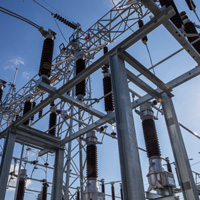When more than $90 billion in corporate investment gets pledged on a single day in July, people take notice. But at Pittsburgh’s AI and Energy Summit—hosted by Allegheny County and Carnegie Mellon University—it wasn’t just the capital commitments that mattered. It was the signal: that this region intends to lead the next wave of AI-driven industrialization, powered by homegrown energy and infrastructure.
With appearances from top executives at Google, Blackstone, CoreWeave, and AWS—plus representatives from the White House and federal agencies—the summit projected alignment between local ambition and national industrial policy. In a single day, Pittsburgh made a play to become the undisputed center of gravity for energy-intensive AI infrastructure.
“There’s a lot of activity happening that gives the region credibility,” said Don Smith, President of RIDC. “But it also gives us a platform for storytelling… and this summit let us show that Pittsburgh has aligned vision, aligned priorities, and aligned assets.”
The New Playbook: Host Big, Signal Bigger
For decades, economic development teams relied on trade shows and outbound missions to attract investment. But this new era of place-based, category-specific summits flips the script. Instead of waiting to be discovered, regions are staging their own industry-defining moments, drawing in investors, federal leaders, and Fortune 500 firms to see the opportunity firsthand.
That’s what made the AI and Energy Summit in Pittsburgh feel different. It wasn’t a ribbon-cutting. It was an intentional signal, broadcast from CMU’s campus and reinforced by public commitments from major players to build in Pennsylvania.
There’s a lot of activity happening that gives the region credibility. But it also gives us a platform for storytelling.
The Stakes: Power, Permits, and Perception
Much of the conversation at the summit centered on power availability and the race to meet surging AI-driven demand for electricity. With Blackstone committing to 14 new data centers and CoreWeave announcing a $1.3 billion facility in western Pennsylvania, the region positioned itself as one of the few U.S. metros capable of delivering baseload energy, political will, and engineering talent at scale.
Site readiness now hinges on two questions: Can you get power? And can you get it fast enough? The summit made clear that Pittsburgh intends to answer both in the affirmative—and with urgency.
“What’s different now is that the private capital, the workforce organizations, and the institutions are all moving in sync,” said Chris Heck, President of the Pittsburgh Airport Area Chamber of Commerce. “You can’t fake that in a press release—but you can demonstrate it at something like this summit.”
Copycat or Blueprint? States Are Staging Their Own Summits
Summits themselves aren’t new. What’s new is how regions are using them. Today’s high-profile, category-specific events—whether focused on AI, energy, space, or quantum—are no longer just networking opportunities or side-stage promotions. They’re becoming core strategies for regions to signal industry leadership, align public and private investment, and anchor national attention.
$90B
Pittsburgh wasn’t first—and it won’t be the last. Utah’s Silicon Slopes Summit has become a signature gathering for tech and entrepreneurship. Georgia has hosted targeted convenings around electric vehicles to help close megadeals with Hyundai and Rivian. And in Northern Virginia, a new global space commercialization conference is in the works, following the success of that region’s Quantum World Congress.
“We had a summit in December that brought together more than 100 high-level leaders from the private sector, federal agencies, and academia to identify our regional strengths and barriers,” said Anna Nissinen, Senior Vice President of the Fairfax County Economic Development Authority. “In November, we’re planning to host a global commercialization of space conference—the first of its kind in the world—modeled after the Quantum World Congress, which now attracts over 1,000 leaders from 30 countries.”
You can’t fake that in a press release—but you can demonstrate it at something like this summit.
These events aren't just showpieces—they’re accelerants designed to build investor confidence, unify political and economic leadership, attract media attention, and shorten time to deal.
And increasingly, with the White House sending senior officials to summits like Pittsburgh’s, these events are being absorbed into national economic strategy.
From Sites to Storylines
It’s no longer enough to have certified shovel-ready sites. Regions now need to tell a coherent, compelling story about why a company should build there—and then back it up with action.
The Pittsburgh summit fused messaging with substance: maps of available grid capacity, data center partners already in motion, permitting reform on the table. In short, it wasn’t just an aspirational pitch—it was proof of readiness.
That model is resonating: as I compose this piece, I received a pitch about a Global Aerospace Summit in St. Louis.
The Takeaway
The summit wasn’t just a moment for Pittsburgh—it was a signal to every region trying to define itself in the AI and energy economy. In a world where site selectors are under pressure to find viable options fast, a well-executed summit can provide more than branding. It can provide certainty.
And in today’s market, certainty is gold.



